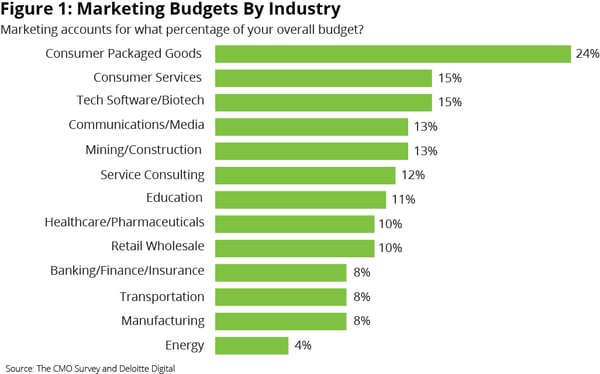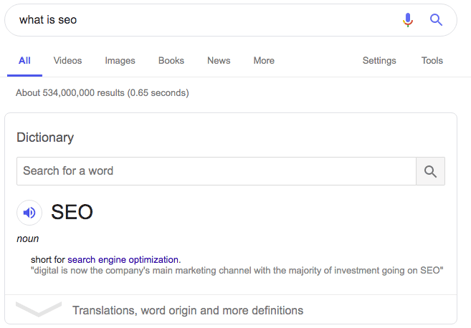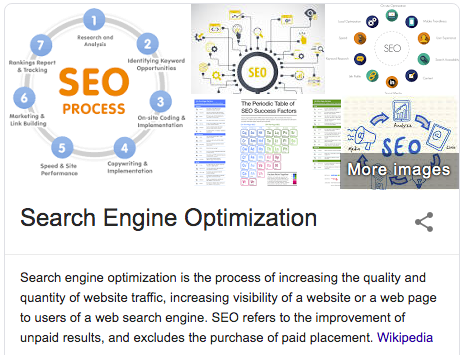
Get weekly
HubSpot updates
SEO or Google Ads? Social media or content marketing? Perhaps all of the above.
In 2019, businesses have a lot of choices to make when it comes to spending their marketing budgets.
Companies are increasing budgets, despite Brexit uncertainty
The uncertainty over Britain’s economic future with the looming Brexit date of 31st March 2019 led to stagnating marketing spend in Q4 2018, including cuts in some areas.
However, UK businesses increased their budgets significantly in the first three months of 2019, with 21.6% of marketing executives reporting growth versus 12.8% saying budgets were reduced.
Digital was the biggest driver of the increase; a net balance of 17.2% said spend went up in this category, compared with just 2.1% in the previous quarter. Search and SEO saw a large swing in particular—from a spending cut of -3.9% in Q4 2018, to growth of 14.2% in Q1 2019.
Which countries are spending the most on marketing?
Perhaps unsurprisingly, the US is spending more on marketing and advertising than any other country. In fact, the nation of Donald Draper is committing more to marketing than the next six highest spenders combined.
- United States — $197.47bn
- China — $79.08bn
- Japan — $41.85bn
- United Kingdom — $24.21
- Germany — $22.74bn
- Brazil — $14.89bn
- South Korea — $12.13bn
- Australia — $12.02
- France — $11.95bn
- Indonesia — $8.71bn
How much should you allocate to marketing?
According to the CMO Survey, on average marketing budgets are set at 10% to 12% of sales, including salaries. The notable exceptions to this are the energy industry (4%) and the consumer packaged goods (CPG) industry (24%).

Source: Wall Street Journal
By comparison, 7.5% of total revenue is being spent on marketing. The biggest spenders by this metric are tech companies, allocating 13.8% of revenue, while CPG companies are at 10.9%.
Our advice? Don’t just set a marketing budget based on what your industry or competitors are doing. If you’re not achieving a positive return on investment (ROI) from your marketing you need to resolve this before throwing more money at it.
Choosing the right channels
Check out where marketers are planning on spending their marketing budgets this year, and where they’re expecting to see success.
Some marketers may have declared email ‘dead’ a long time ago, but 93% of B2B marketers use this channel to distribute content, while there is expected to be 5.6bn active email accounts by the end of this year. What’s more, according to Statista 73% of marketers say email delivers ‘medium to excellent ROI’.
SEO
Google may be making it harder to achieve strong organic click-through rates through an increased emphasis on ads and Instant Answers, but the fact that 90% of internet users only look at the first page of results means SEO is still an essential consideration.
It may be getting harder, but half of all marketing/advertising agencies say SEO delivers ‘good to excellent’ ROI, according to GetResponse.com.
Social media
More and more consumers are expecting social networks to deliver brand messages, with 37% of them now using these platforms to find purchase inspiration—more than any other single channel.
Think carefully before launching any social media campaigns. Avoid the temptation to cover all bases—your target market will likely be using one channel more than others
Pay-per-click (PPC)
As we mentioned previously, Google is putting increasing pressure on the organic search results, with the addition of a fourth ad (replacing the old right-hand ad sidebar) a couple of years ago and the increasing use of Instant Answers boxes keeping users within the SERPs themselves. For example:


A user looking for a basic overview of SEO doesn’t need to click on any links at all, with the answers instead presented directly on the search result page. For this reason, Google Ads and other paid media are becoming increasingly important.
A massive 40% of brands plan to increase their PPC budgets this year, and it’s easy to see why. Paid search can increase brand awareness by 80%, while almost half (46%) of all SERP clicks go to the top three ads.
There is a wide range of digital marketing channels available, but you need to choose which ones are right for you carefully. Where are your buyer personas hanging out? What has worked for your business in the past?
Identify where you’re going to get the best bang for your buck and avoid spreading your marketing too thin.
